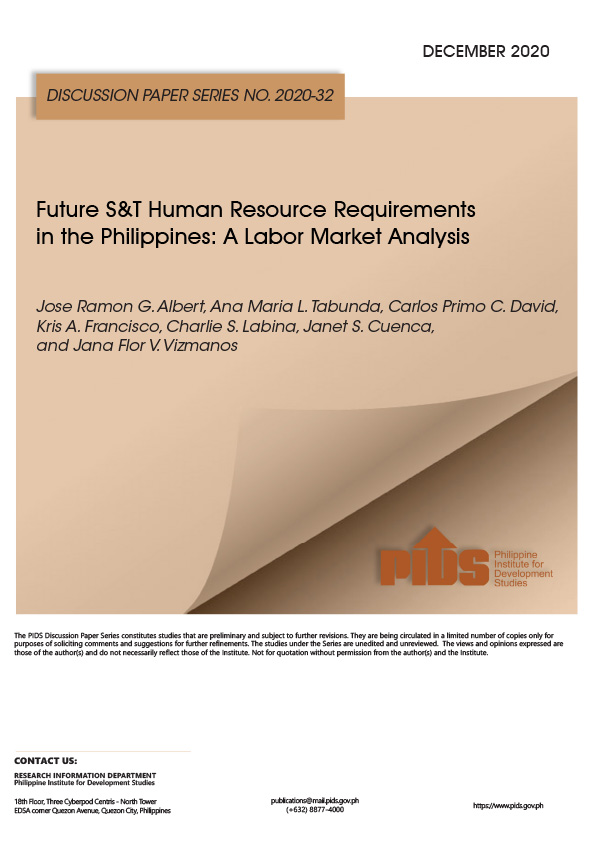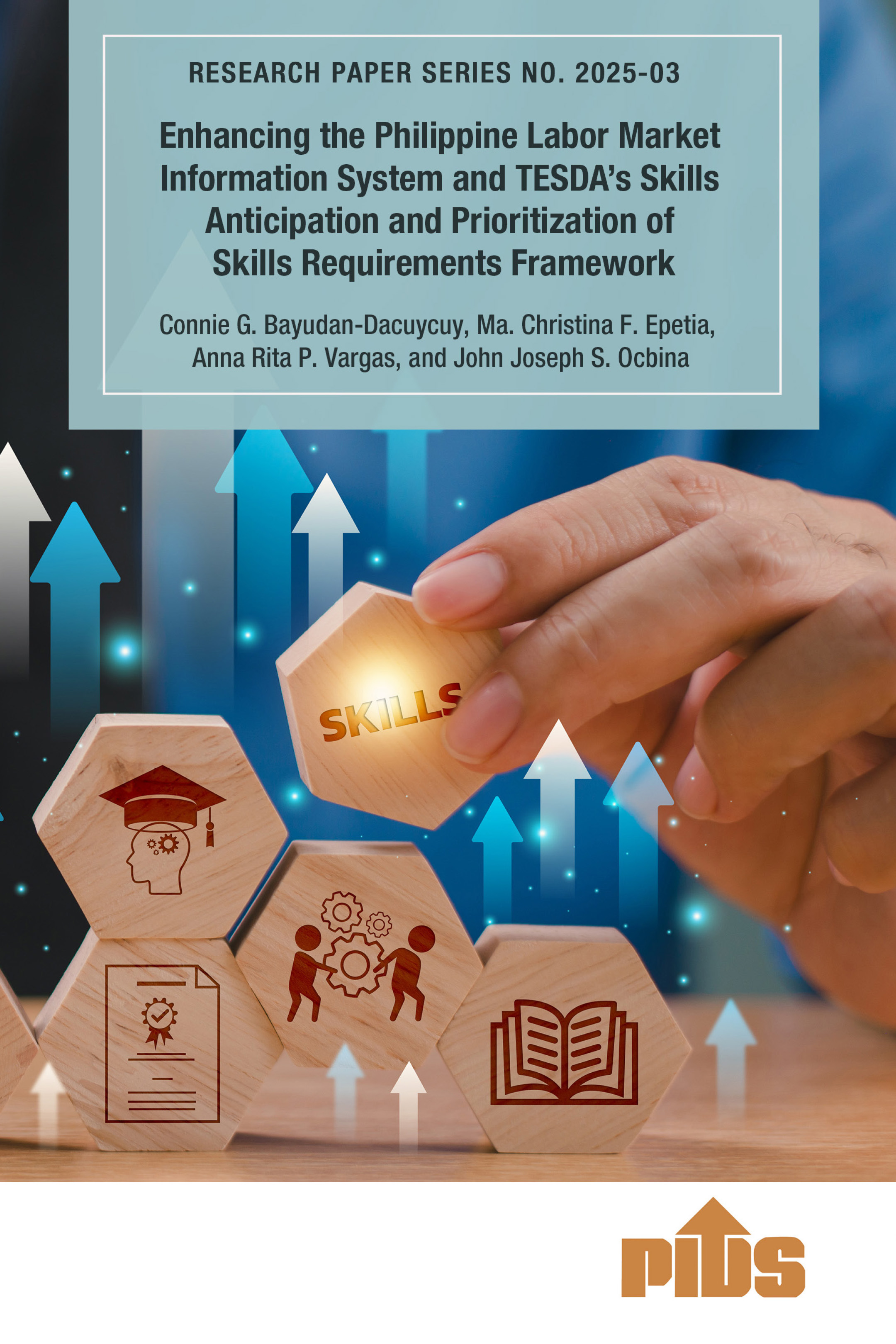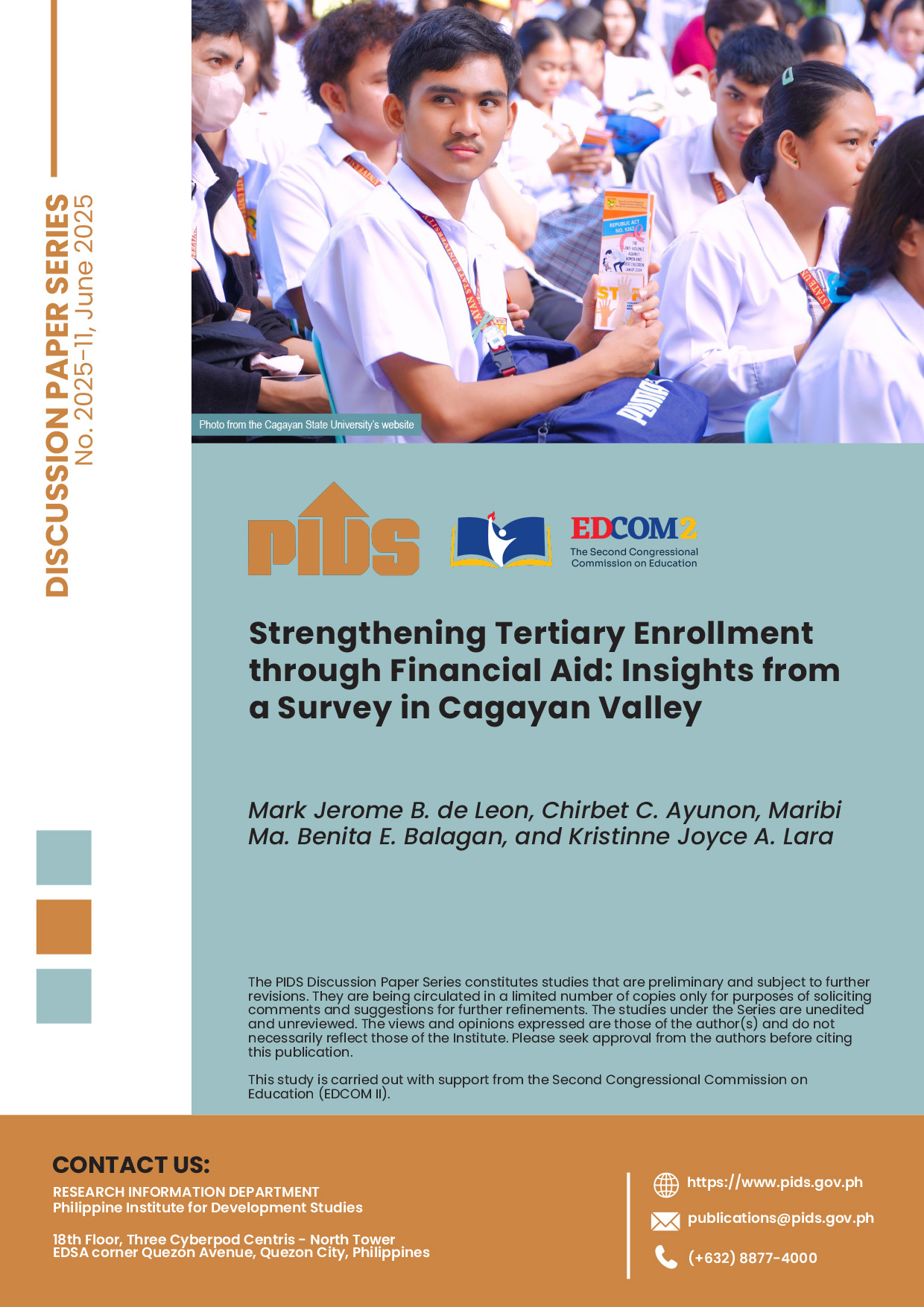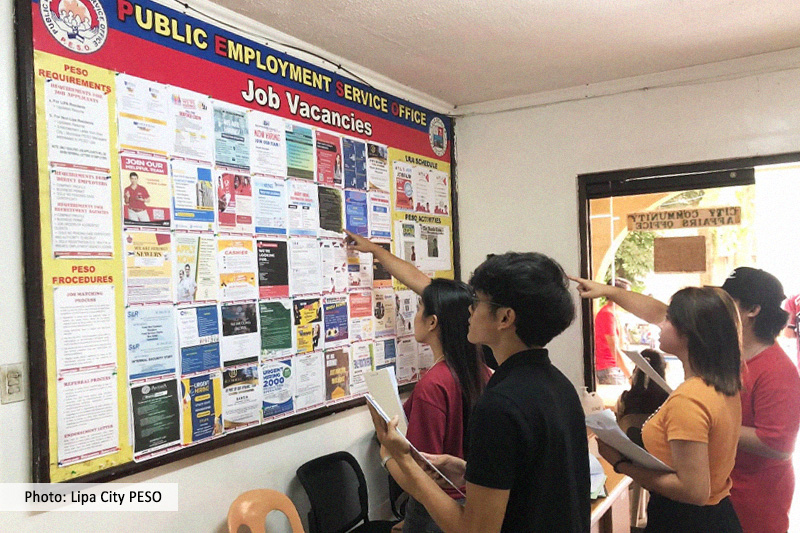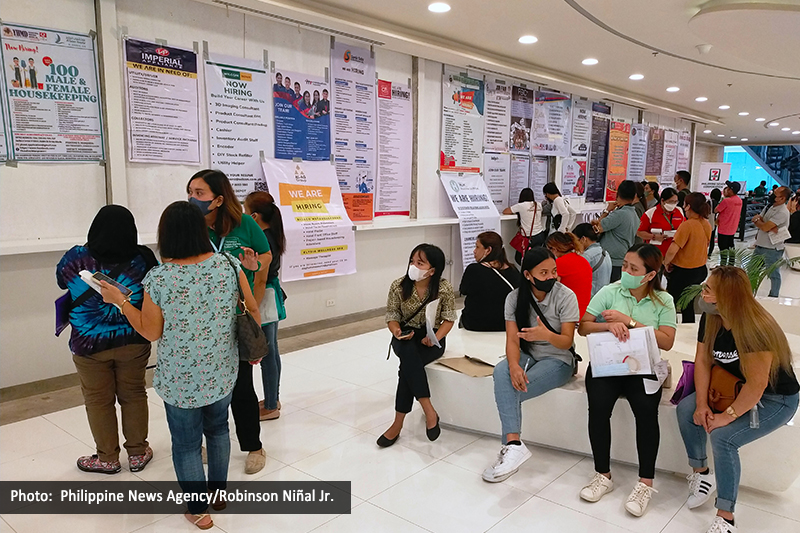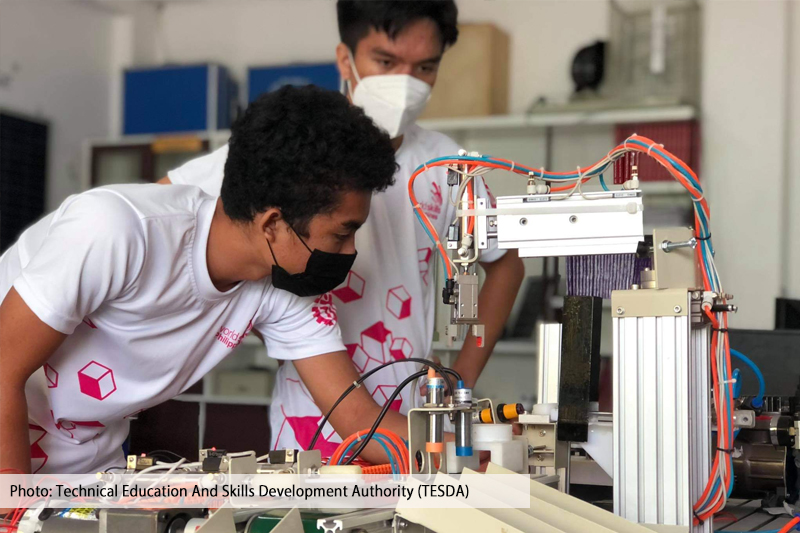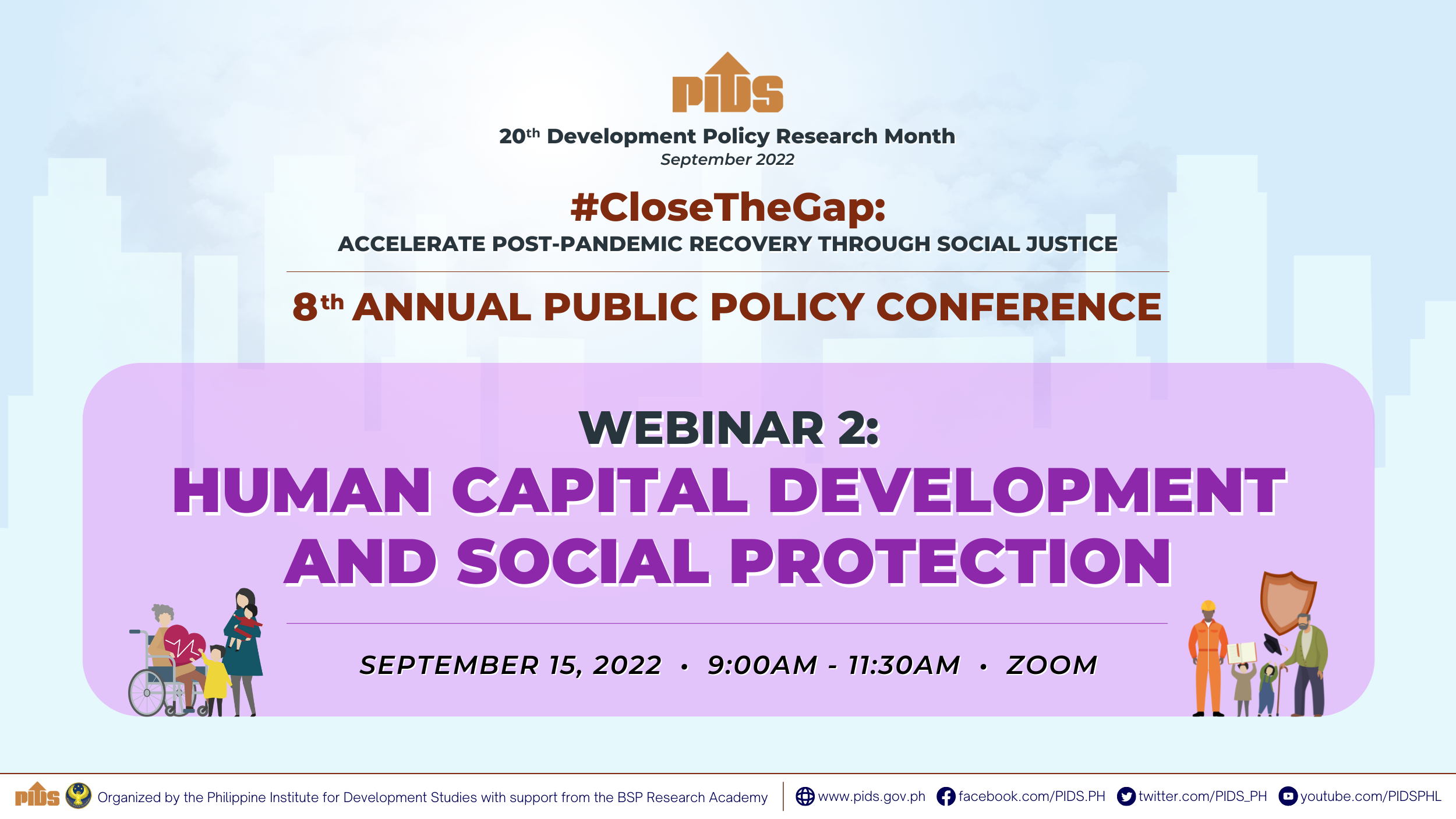This study aims to describe the prevailing supply and demand conditions, patterns and recent trends regarding science and technology (S&T) human capital in the Philippines by examining secondary data from various data sources. Overall, the results show that although the scientific workforce constitutes only a minute share of the total workforce, and that the variegated occupations across S&T do not have uniform growth potentials as regards employment, both the government and the private sector need to support most of S&T disciplines, especially in the wake of new tasks from emerging technologies of the fourth industrial revolution. Despite an increasing demand for S&T resources and indicators on employability prospects, many of the young do not pursue and persevere in science, technology, engineering, and mathematics (STEM) careers. Government and the private sector should be incentivizing them toward STEM even as early as junior high school. Providing financial assistance or scholarships can be helpful, but this alone may not be enough to produce the needed pool of future S&T human resources. Government is advised to also gain insights on various factors that affect the supply of S&T workers to craft necessary policies for incentivizing S&T graduates to persevere in their disciplines, and actively participating in the economy. The future appears favorable for engineers given our current level of productivity, technology, and projected growth. In contrast, the economy may not be able to accommodate the increasing supply of workers with computing/information and technology background. Although some, if not many, of those with computing skills may be accommodated in new jobs. Still, it may be prudent to substantially invest in S&T human resources, and provide supporting mechanisms to make our S&T human resources agile and our innovation ecosystem flourish.
Comments to this paper are welcome within 60 days from date of posting.
Email publications@mail.pids.gov.ph.
Citations
This publication has been cited 24 times
- Abante News . 2023. Prayoridad ang edukasyon. Abante News .
- Adobo Magazine . 2025. QBO Innovation, US Embassy partner up to empower Filipino youth towards STEM skills. Adobo Magazine .
- Baylon, Melinda. 2025. IT talent development and retention. Futurecio.
- Beatrice M. Laforga . 2021. Philippines facing oversupply in IT graduates, STEM shortage. Business World.
- Beatriz Marie D. Cruz . 2025. QBO Innovation Hub, US Embassy tie up to encourage interest in STEM. BusinessWorld.
- Businessmirror. 2022. Choosing the right field, specialization for a promising career in engineering. Businessmirror.
- BusinessMirror . 2022. Mapua gives free online training to high-school STEM teachers. BusinessMirror.
- BusinessWorld. 2025. QBO Innovation, US Embassy partner up to empower Filipino youth towards STEM skills. BusinessWorld.
- DOST-SEI . 2021. Gov’t, private sector need to mold S&T workforce together – DOST-SEI, PIDS study. DOST.
- Dr. Dodjie S. Maestrecampo . 2025. Building, empowering PH engineering workforce amid talent shortfalls. Rappler.
- Fadl Al Tarzi . 2021. Digital transformation and technology: The importance of tertiary education and upskilling in the Philippines . Manila Times.
- Galvez, Edwin. 2021. UP, DOST study: Prospects bright for PHL’s basic science education. BusinessMirror.
- Jonathan Castillo . 2025. Step Juan program aims to cultivate young technopreneurs and students. Manila Times.
- Kapampangan Media. 2022. The future of STEM education. Kapampangan Media.
- Manila Standard Digital . 2022. Mapúa equips high school STEM educators thru STEM Teach 2.0. Manila Standard.
- Manila Times. 2022. Pursue that dream engineering career at Mapua University. Manila Times.
- Manila Times . 2022. Persuade more learners to take up STEM courses. Manila Times.
- Patricia B. Mirasol . 2021. Public trust in science boosted by pandemic, survey finds. Business World.
- Ron Castro . 2025. QBO Innovation and U.S. Embassy launch STEM empowerment program for Filipino youth. The Independent Investor.
- Tekkie Pinas . 2025. QBO Innovation, US Embassy Partner up to Empower Filipino Youth Towards STEM Skills. Tekkie Pinas .
- The Manila Times . 2022. Mapua equips high school STEM educators through STEM Teach 2.0. Manila Times.
- Trendrod. 2025. QBO Innovation, U.S. Embassy in PH partner for ‘Step Juan’ program. Trendrod.
- ZigZag Weekly . 2022. Pursue STEM courses, DOST-CAR encourages students. ZigZag Weekly .
- Garcia, Pablo John. 2021. House Bill 9883: An act strengthening the knowledge economy human resources of the Philippines by increasing the appropriations for scholarships, scientific research, innovation and enterprise, education and skills training, and for other purposes. House of Representatives.

